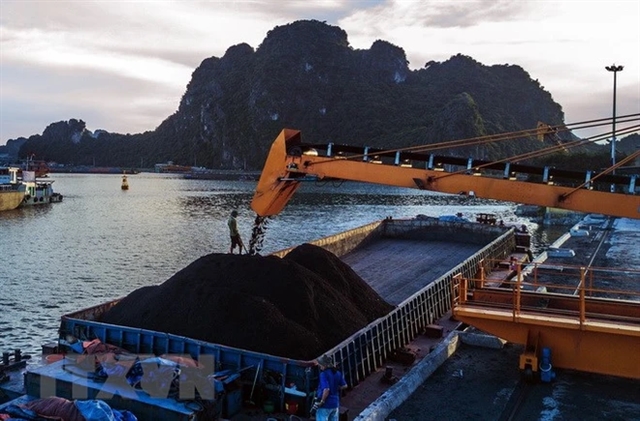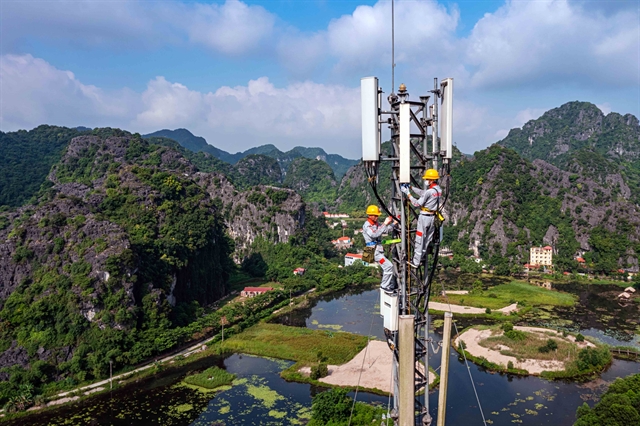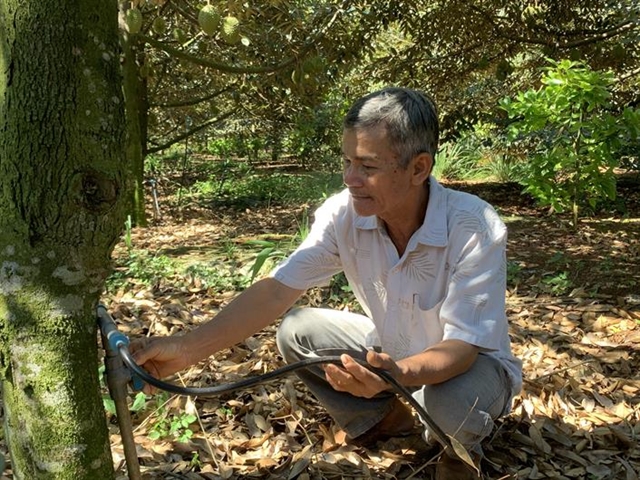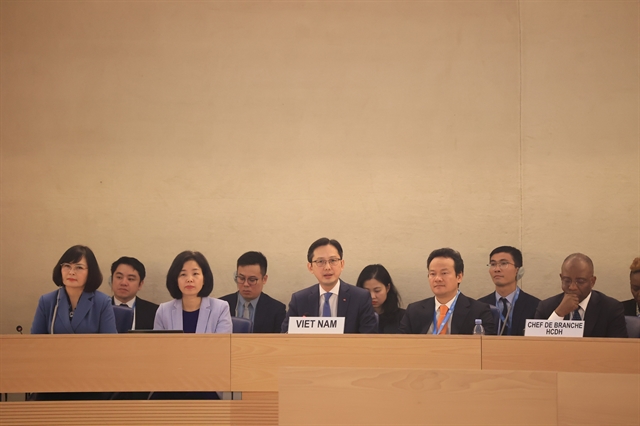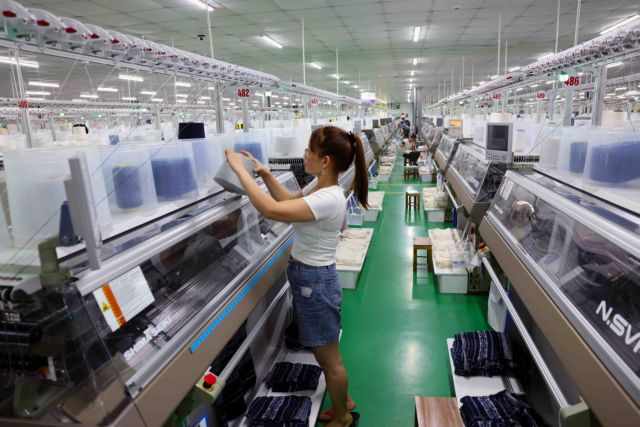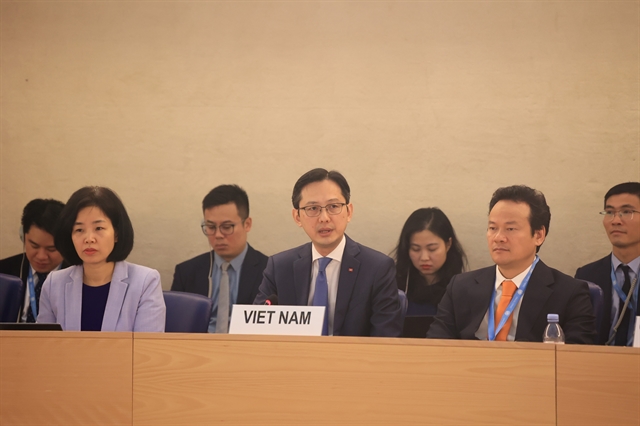 Society
Society
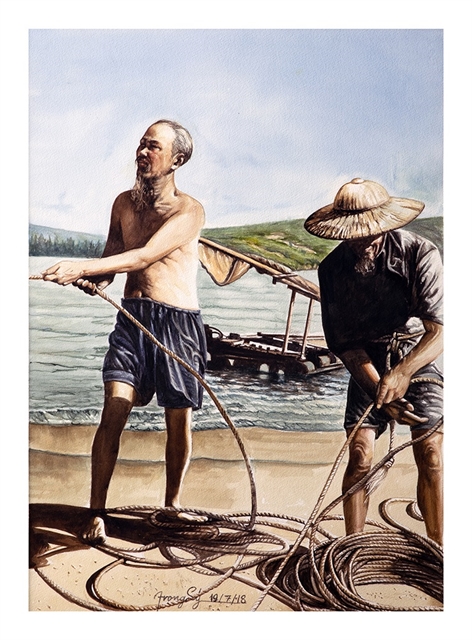
A ceremony was held yesterday in memory of the Vietnamese civilians cruelly killed in the tragic Mỹ Lai massacre during the American war, and was attended by Vietnamese leaders, local residents and US veterans.
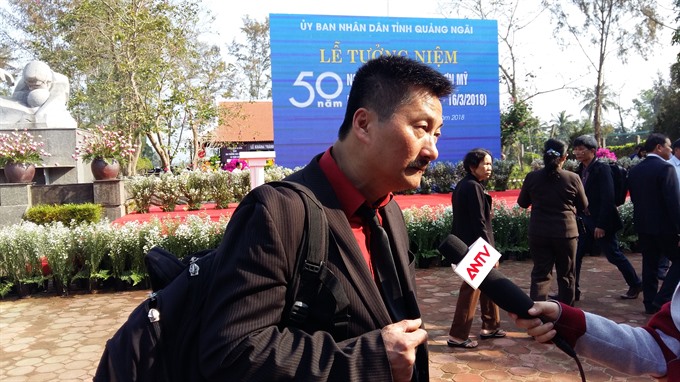 |
| Vietnamese-German Trần Văn Đức, a survivor of the Mỹ Lai massacre. — VNS Photo Công Thành |
QUẢNG NGÃI — It’s been around 50 years since former US Army photographer Ronald L. Haeberle documented the tragic Mỹ Lai massacre on March 16, 1968, when 504 unarmed villagers – 182 women, and 173 children and infants – in the centre of now Tịnh Khê Commune, in Sơn Tịnh District, were killed by soldiers of Charlie Company, under the command of Lieutenant Calley.
A ceremony, which was held yesterday in memory of the Vietnamese civilians, cruelly killed during the American war, was attended by former President Trương Tấn Sang; deputy Prime Minister Trương Hòa Bình, local residents and US veterans.
At the ceremony, the Mỹ Lai Memorial Foundation was introduced to build connections between lovers of peace around the world.
A 41-ha Mỹ Lai Peace Park is also planned for construction in the village, and a square will be built in the coming years.
“Everything has changed. More expressways have been built and there are more motorbikes on the road in Mỹ Lai Village. It was underdeveloped when we were here 50 years ago,” Ronald said.
“My photos of the massacre told the world the truth about what happened 50 years ago. The true story had not been told in America and the world. I just wanted to tell everyone about the massacre with my photos from the field,” he said.
“I have visited the site several times since I left Việt Nam in 1969.”
Ronald was not known by local villagers until 2011 when he returned to the village to identify a person in a photo that he took that day. The photo was of a man sheltering his younger brother in a paddy field to avoid enemy gunfire.
The villagers knew him as the photographer behind the photos of the infamous massacre.
At the time, Ronald carried two cameras; one was assigned by the US Army with two rolls of black and white film, to follow the action. He returned these rolls of film to the commander of Charlie Company, but kept his own camera, with which he took 18 color photos that were published in Life magazine, exposing the true story.
Ronald’s iconic black and white photographs become all the more visceral when displayed at the Mỹ Lai vestige museum.
A caption on one of Haeberle’s photos, “Most were women and babies. It looked as if they tried to get away”, is redundant – as if the scene of women and babies piled up on a path needed an explanation.
US veteran Roy Mike Boehm has made regular visits to Mỹ Lai, where he would play violin in honour of the victims of the massacre and in promotion of peace.
Mike had not been in Mỹ Lai until the day he visited the site and saw photos and documents of the massacre.
He decided to support local women and residents with funding to help ease difficulties they faced over the decades.
Mike established the Madison Quakers Inc, an NGO, to raise funds for women, farmers and victims of Agent Orange (AO) to buy cows and livestock in the rural village as well as supporting poverty reduction efforts.
He now visits the country as a healer of the wounds inflicted on Quảng Ngãi Province during the war.
He still calls out to other American war veterans to visit Việt Nam to bridge and promote the relationship between the country and its international friends to alleviate the pain of war.
Mike Hastie, another US veteran, who was in An Khê of Gia Lai Province in 1970, joined the commemoration with his only daughter.
“The Mỹ Lai massacre was only one of different massacres during the war. Vietnamese people are respected by the world when they demonstrated how to protect the country’s independence,” Mike said.
“I was born in the US, but my heart belongs to Việt Nam. I’m so proud of Vietnamese people and the country.”
Đỗ Bá, a survivor of the massacre, recalled that he was rescued by Hugh Thomson (a helicopter pilot) and Larry Coburn (a gunner on the helicopter) when they stopped US soldiers killing residents of Thuận Yên and Tư Cung hamlets.
“I was 7 years old, and I was lucky when the two American soldiers saved me from the killing. It was a bloody day in my life,” Ba said.
“I took two photos of them (Hugh Thomson and Larry Coburn) to worship them, as they brought me back from hell,” he said.
The killings that occurred on March 16, 1968 prompted widespread outrage around the world. The incident is credited with advancing the end of the American War because of how it undermined public support for the war in the US.
The 3-ha Mỹ Lai Museum, 13km from Quảng Ngãi city, retells the event through images of damaged thatched roofs and footprints of villagers escaping from American soldiers in March of 1968.
The main building at the centre of the museum complex houses over 1,000 items and photos, remnants of the massacre.
The site also preserves a stream in the village, where American soldiers herded remaining villagers to kill them off, turning the water red.
Phạm Thành Công, 63, another survivor of the massacre, recalled that the morning on that day was broken by 30 minutes of shelling at around 5.30am. The assault continued with rockets launched from helicopters.
Eight of his 15 family members tried to escape but were shot; the rest were killed by mines or grenades. An eight year-old boy running from the shelter was shot dead, his mouth still full with the morning’s rice, he recalled.
Công published his own book about the slaughter of 504 unarmed civilians by American soldiers.
The book, Pinkville’s Memory, describes everything that Công remembers from that day and what his life became after the massacre.
He said his mother and six brothers were killed in their house. He was seriously injured but was saved by his father.
Kristen Roy, 24, the daughter of an American veteran, left a message in the visitors’ book during a visit to the site, and the message has been reprinted on the book’s back cover.
Roy wrote, “As a daughter of an American veteran, I have always been curious of the certain mystery deep in my father about Vietnam. I cannot say I fully understand this and I never will, but in my past few weeks in Vietnam I have come to a closer understanding of my father and his fellow veterans, as well as of the beautiful people of Vietnam and their strength as well. Let this bridge of understanding continue to grow and be stronger, as I will do my part in my life to make sure the understanding is never again broken.”
Vice chairman of the provincial people’s committee, Đặng Ngọc Dũng, said the memorial ceremony of the Mỹ Lai massacre "reminds the world that lovers of peace should do all in preserving peace forever, and ensure the Mỹ Lai massacre is never repeated". — VNS
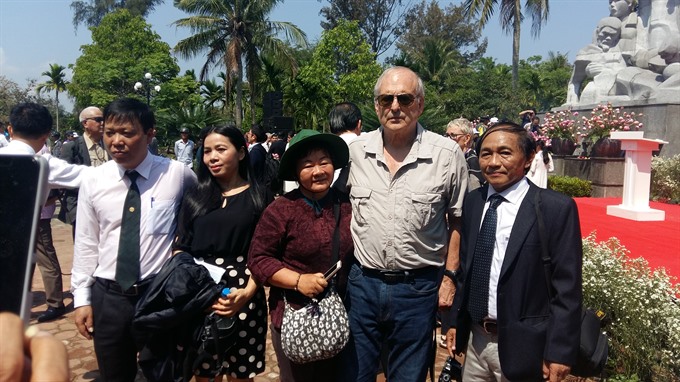 |
| Former US Army photographer Ronald L. Haeberle (second right) stands with Vietnamese friends in a ceremony marking the 50th anniversary of the Mỹ Lai massacre in Quảng Ngãi Province. — VNS Photo Công Thành |
 |
| Deputy Prime Minister Trương Hòa Bình talks with US veteran Roy Mike Boehm. — VNS Photo Công Thành |
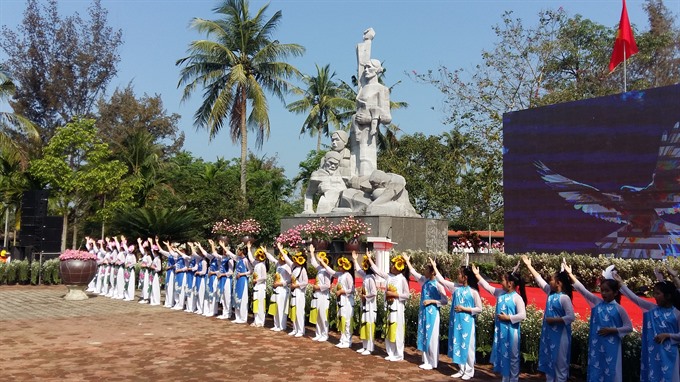 |
| A memorial service held in Sơn Mỹ Commune, Quảng Ngãi Province, to commemorate the 504 civilians who were killed by US soldiers in 1968. — VNS Photo Công Thành |


